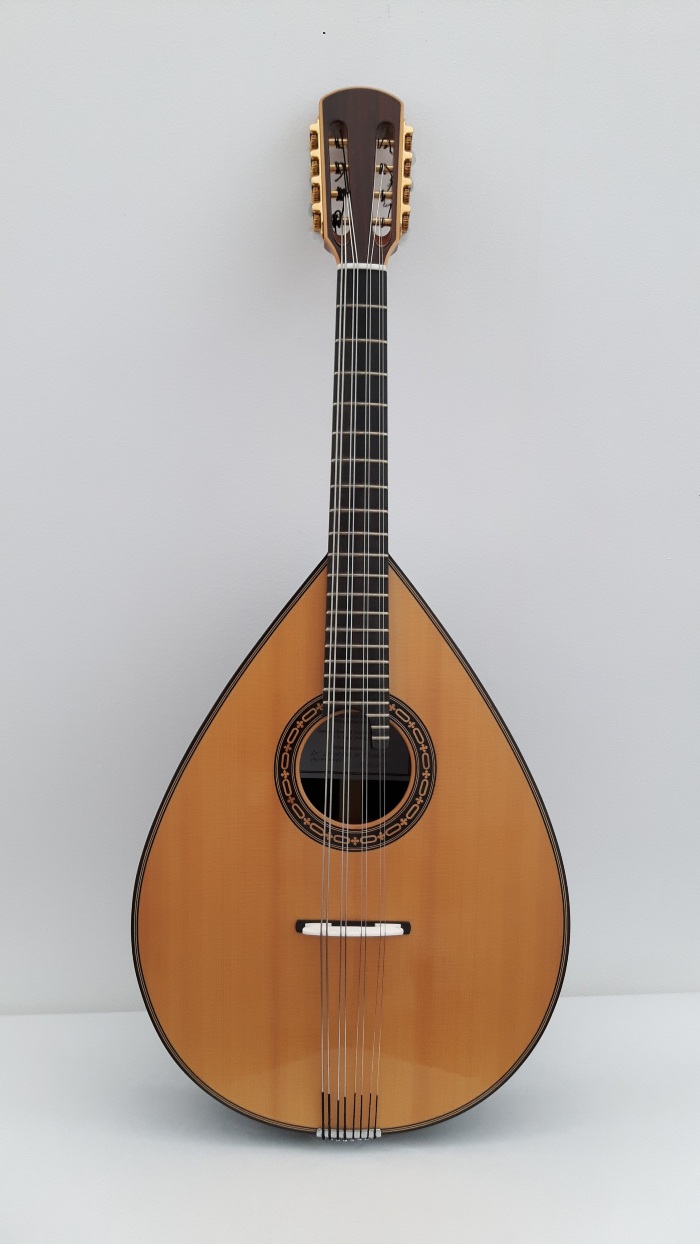Musical instruments ➔ Bandola
Identifier:
MusA-806Description
It is a chordophone played with a plectrum, assembled with four double orders (4X2=8 strings), G, D, A, E, from low to high, tuned in intervals of fifths, and fulfils the function of ‘tenor’ in the mandolin family. It has a similar morphology to the mandolin with a flat bottom and a string length of around 44-46 cm.It is inspired by the Italian ‘mandola’, with its domed bottom, and is sometimes called the ‘octava mandola’ because it is tuned an octave lower than the mandolin. It owes its popularity to the appearance of mandolin quartets and orchestras in Italy.
The term ‘mandola’ originated in the 16th century, and the corresponding instrument underwent changes in shape and stringing, giving rise to the mandola and the Lombard mandolin (sometimes called Milanese) with six double orders (6x2= 12 strings), made of gut, played with the fingers.
It wasn't until around 1740 that the ‘Neapolitan mandolin’ appeared, with eight steel strings, played with a plectrum, and from which comes our mandolin, which fulfils the function of ‘soprano’ in its own family.
Dimensões
77 cm; length;46 cm; length of the rope/cordDate
2011 Date manufactureInternal Notes
MusA-806A é o número de inventário da caixa do instrumento.Languages
PortugueseEnglish
Related people
Engenheiro Joaquim Domingos Capela (1943) (luthier)Oficina Joaquim Domingos Capela (factory manufacturer)
Related place
São Félix da Marinha (describes)Related Term
Related Terms
Musical instruments (depicts)UA University cooperation (depicts)
